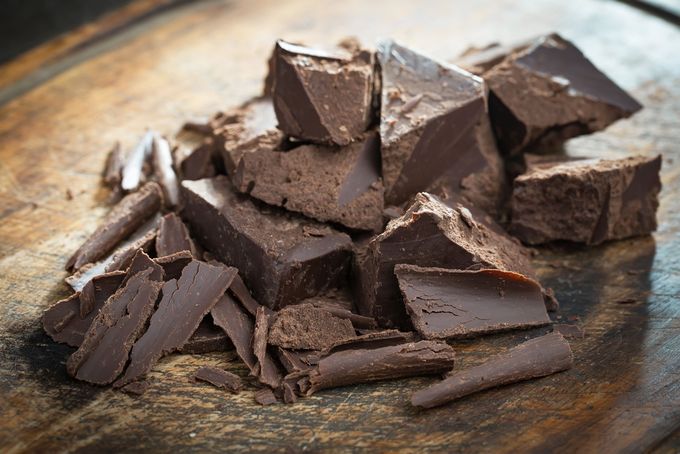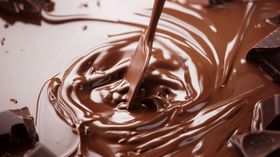Unveiling the Ancient Art: How Traditional Chocolate is Made
From sacred ritual to modern indulgence: a deep dive into traditional chocolate making
Updated November 25, 2024

Once a sacred food, chocolate has been transformed into a mass-produced confection. Yet, a growing number of artisans are challenging the status quo. They're redefining what chocolate can be by honoring ancient traditions and prioritizing quality over quantity.
Ido Talmor from KAICAO Fabrica de Chocolate in Madrid tells us how the bean-to-bar movement is preserving chocolate's rich heritage while crafting its future, one carefully crafted bar at a time.
» Indulge in chocolate crafted with time-honored techniques
Exploring the origins of chocolate
Over 4,000 years ago, the Olmec discovered cacao’s potential in Central America. This humble seed has since evolved into chocolate, journeying from ancient Mesoamerica to modern-day artisanal shops.
The first chocolate
The story of chocolate began over 4,000 years ago in Mesoamerica. The Olmec civilization first recognized the cacao bean's potential, but the Maya and Aztec cultures elevated it to a divine status.
Both civilizations believed cacao was a gift from their gods and used it to create a bitter, frothy drink called "xocoatl." This drink was far from the sweet chocolate we know today—it was a sacred beverage reserved for rulers, priests, and warriors.
Journey to Europe
In the 16th century, Spanish conquistadors brought cacao beans back to Europe, where the drink initially met with mixed reactions due to its bitterness and unusual flavor.
Over time, Europeans began experimenting with adding sugar and other ingredients to make the drink more palatable. By the 17th century, chocolate had become a popular beverage among the European elite, often served in elegant chocolate houses.
Did you know?
Madrid was one of the first European cities to be introduced to cacao. Even today, drinking chocolate remains a more popular choice than eating chocolate bars, a tradition deeply rooted in the city's culture.
» Avoiding sugar? Find out why dates are a healthy alternative sweetner
Chocolate's ingredients: Cacao vs. cocoa
The terms 'cacao' and 'cocoa' often cause confusion but represent important distinct ingredients in chocolate production. Here's what sets them apart:
Cacao refers to the raw, unprocessed form of chocolate, including the tree, pods, and beans in their natural state. Traditional chocolate makers use this term to indicate minimal processing and a closer connection to the ingredient's natural state.
Cocoa is processed cacao, particularly powder and mass-produced products. The transformation from cacao to cocoa involves higher temperatures and more industrial processes that can alter the beans' natural compounds and flavors.
While cocoa is more common in commercial products, it represents a departure from chocolate's traditional roots.
» Learn more about the antioxidants in cacao that make it so healthy
Understanding modern chocolate production
Before we explore traditional methods, it's essential to understand how modern commercial chocolate production has diverged from its roots. Large-scale manufacturers have developed processes that prioritize efficiency over flavor preservation:
- Industrial chocolate production relies heavily on mechanical pressing at high temperatures to separate cocoa butter from cocoa solids. This process strips away many complex flavor compounds in the original beans.
- Commercial chocolates commonly incorporate artificial emulsifiers, additional fats like palm oil, and preservatives to achieve consistent texture and extended shelf life, which masks the subtle flavors of pure cacao.
- The heavy processing methods significantly reduce the health benefits of chocolate, as minimally processed cacao contains up to five times more beneficial flavanols than heavily processed versions.
- Many manufacturers add excessive sugar and artificial flavors to compensate for lower-quality cacao and rapid processing. This transforms what was once a nutrient-rich food into a high-calorie confection with minimal nutritional value.
» Learn how minimal processing helps retain theobromine in cacao
The art of traditional chocolate making with KAICAO
At KAICAO, we believe in celebrating chocolate in its purest form, which begins with using true cacao, not cocoa. While many associate cacao with bitterness, we understand it as a complex ingredient with an extraordinary range of flavors.
From farm to bar, each origin brings its unique flavor profile. Our Tanzanian beans from Kokoa Kamili farm offer bright notes of raspberries and tropical fruits, while our Ecuadorian beans deliver a complex mineral and earthy taste.
Did you know?
The journey from bean to bar spans 35–40 days, a testament to our commitment to craft and quality.
Step 1: Harvesting
We guarantee the highest quality and support ethical, sustainable practices by sourcing exceptional, single-origin cocoa beans directly from small farmers and cooperatives.
Each step in transforming cacao fruit into chocolate is crucial for developing its complex flavors:
- Harvesting: Farmers cut perfectly ripened cacao fruits by hand using traditional machetes. They check ripeness by gently shaking each fruit to verify it has separated from its inner husk—a sign of perfect maturity that ensures optimal flavor.
- Fermentation: Fresh cacao beans with their pulp intact rest in wooden boxes for 3–7 days. During this time, the pulp's natural sugars create an alcoholic fermentation that heats the beans, developing their distinctive chocolate flavors while reducing bitterness.
- Drying: The fermented beans spread across wooden beds to sun-dry for 7–14 days, depending on weather conditions. This reduces moisture while letting the flavor compounds develop.
- Sorting: Skilled artisans examine each batch by hand, removing any beans with imperfections in size, shape, or condition. This quality control ensures only the finest specimens continue to chocolate-making.
Step 2: Processing
The transformation from bean to chocolate involves several crucial steps:
- Roasting: We craft unique roast profiles for our beans from El Salvador, the Dominican Republic, Peru, Ecuador, Tanzania, and Uganda. This meticulous approach, with temperatures never exceeding 120°C, preserves each origin's natural flavors and health benefits.
- Cracking: The cracking and winnowing stage separates the valuable nibs from their husks, preparing them for the grinding process that will transform them into chocolate.
- Grinding: Traditional stone grinding continues for 3–5 days, slowly developing the chocolate's smooth texture while preserving its complex flavor compounds without the need for artificial additives.
- Natural Sweetening: Unlike conventional makers who rely on refined sugar, we exclusively use dates as our sweetener. This choice maintains the chocolate's natural character while adding subtle caramel notes.
» Indulge in notes of fudge, banana, and yogurt with chocolate from the DRC
Step 3: Crafting the bar
- Maturing: Once the desired consistency and sweetness have been achieved, the chocolate is poured into molds to solidify. These blocks are then aged for at least a month, allowing the flavors to mature and meld together.
- Tempering: The solid chocolate blocks are remelted and tempered. This process involves carefully manipulating the chocolate's temperature to ensure it's shiny, snaps crisply, and melts smoothly in the mouth.
- Molding and Packaging: The tempered chocolate is poured into molds to create the final chocolate bars. After setting, they're carefully packaged, ready for chocolate lovers everywhere to enjoy.
Did you know?
We adjust grinding times, temperatures, and aging periods to highlight each origin's unique characteristics, ensuring the final product showcases the beans' natural flavor complexity.
KAICAO: Bridging tradition and innovation
By honoring ancient traditions and embracing modern innovation, KAICAO is crafting a new era of chocolate. Our commitment to sustainable practices, natural ingredients, and ethical sourcing ensures that every bite is a taste of the future.
When you experience a KAICAO bar, you taste chocolate in its truest form—a masterpiece thousands of years in the making, refined for the modern palate.
» Experience the magic of traditional chocolate-making with KAICAO
Disclaimer: The chocolate information provided by KAICAO is intended for educational purposes related to chocolate products. We encourage you to embrace the chocolate experience, savor each moment, and explore the world of chocolate with passion.






